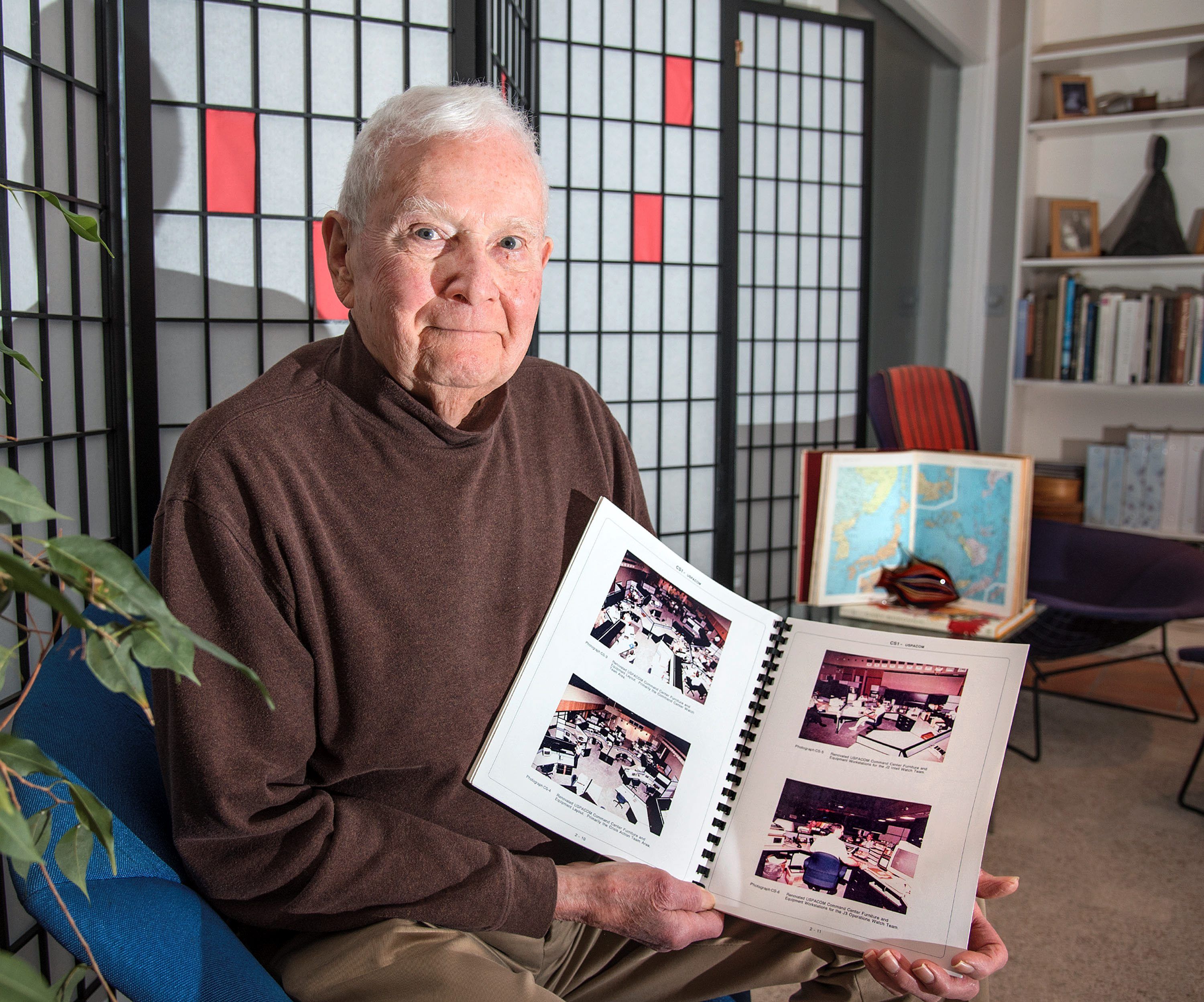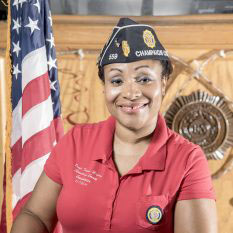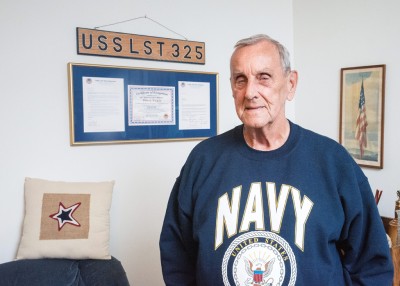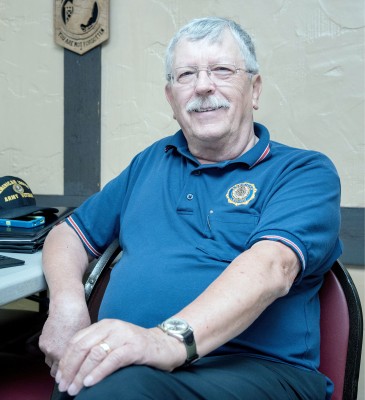Robert Porter
By Paul Wood

Photo By Heather Coit/The News-Gazette
CHAMPAIGN — Though his main service was in the Korean War, Robert Porter witnessed the aftermath of destruction on Nagasaki, helped save Vietnamese refugees and worked for the Army Corps of Engineers at the end of his career.
Porter, 84, grew up in Iowa and was studying architecture at Iowa State when the Korean War started in June 1950. Knowing he would be drafted into the Army, he chose to enlist in the Navy.
From January 1951 through December 1954, he served in that branch, mostly on the USS Montrose (APA 212), as part of an amphibious attack squadron, transporting soldiers and Marines from Japan to Pusan and Inchon in Korea.
He served as a weatherman for up to 20 ships at a time, guiding them safely through the squalls.
After the 1953 truce — the Korean War has never really ended — Porter got a chance to see much of Asia, including Hong Kong and the Philippines.
“I even got to climb Mount Fuji” in Japan, he notes.
But he also saw a horrific site, Nagasaki, the second city that was atom-bombed to end World War II.
“I had to go to Nagasaki,” Porter says. “It was an architect’s dream to rebuild a city.”
Porter met a Japanese man who’d made it through the horrors of the end of the war, who said “it was meaningful that Americans dropped the second bomb on Nagasaki.”
The first bomb on Hiroshima would not have ended the war, the man told him. The mind-set of the leaders was to fight to the end, and only the repeat of the bomb could change their minds.
“He told me the bomb saved millions of Japanese lives,” Porter said.
Back on his ship in 1954, there was a different war going on.
Porter’s group was assigned to be part of the Operation Passage To Freedom, a rescue mission in Indochina.
After the French lost the Battle of Dien Bien Phu, Porter notes, Vietnam was divided into north and south at the 17th parallel.
More than 700,000 Vietnamese civilians were Catholics, who wanted to flee the communist North Vietnam.
“We made five trips from Haiphong on the north coast to Saigon on the south coast, transporting about 3,000 Vietnamese each time,” Porter recalls.
“There were 24 children born on our ship alone during the trips, which made them potential U.S. citizens. Over 300,000 people were transported by U.S. ships during the operation.”
Each trip took 31/2 days.
After his Navy career, Porter finished college and began his architecture career in 1960 in Iowa.
What brought him to Champaign was the Army Corps of Engineers’ decision to bring a construction lab near the home of the University of Illinois’ engineering and architecture departments.
In 1974, Porter joined the Habitability Team at CERL, working on supporting facilities for a volunteer military, developing handbooks designing more efficient and more pleasant surroundings for the Defense Department and each branch of the service.
He did decor work for dining facilities and recruiting stations, testing out some of the ideas at Marine Corps Air Ground Combat Center Twentynine Palms in California.
Much of his work ended up in the Pentagon, Porter recalls.
He and his wife, Janet, who has since died, brought up two boys and two girls in Champaign as he finished out his architecture career at CERL.
Do you know a veteran who could share a story about military service? Contact staff writer Paul Wood at pwood@news-gazette.com.
Read more stories from local veterans:
 Ronnie Turner-Winston
URBANA — Ronnie Turner-Winston considered her role as a chapel management specialist working with soldiers during Operat …
Ronnie Turner-Winston
URBANA — Ronnie Turner-Winston considered her role as a chapel management specialist working with soldiers during Operat …
 Bruce Voges
ST. JOSEPH — Bruce Voges enlisted in the Navy in 1944 at the age of 17, landed Marines from a small craft on Iwo Jima an …
Bruce Voges
ST. JOSEPH — Bruce Voges enlisted in the Navy in 1944 at the age of 17, landed Marines from a small craft on Iwo Jima an …
 Rudi Laufhutte
CHAMPAIGN — Rudi Laufhutte survived a childhood in Germany where U.S. bombers leveled his town, then went on to serve pr …
Rudi Laufhutte
CHAMPAIGN — Rudi Laufhutte survived a childhood in Germany where U.S. bombers leveled his town, then went on to serve pr …